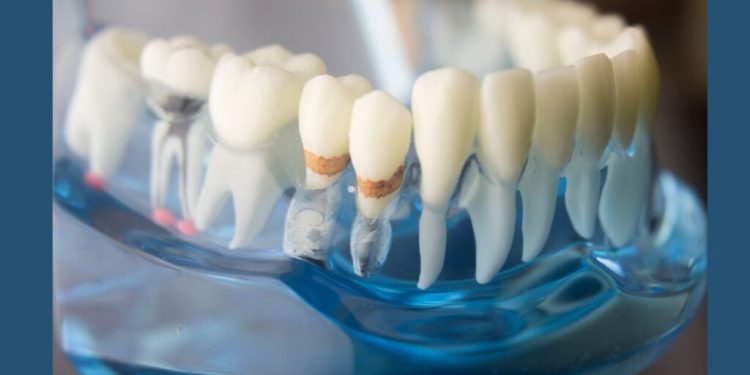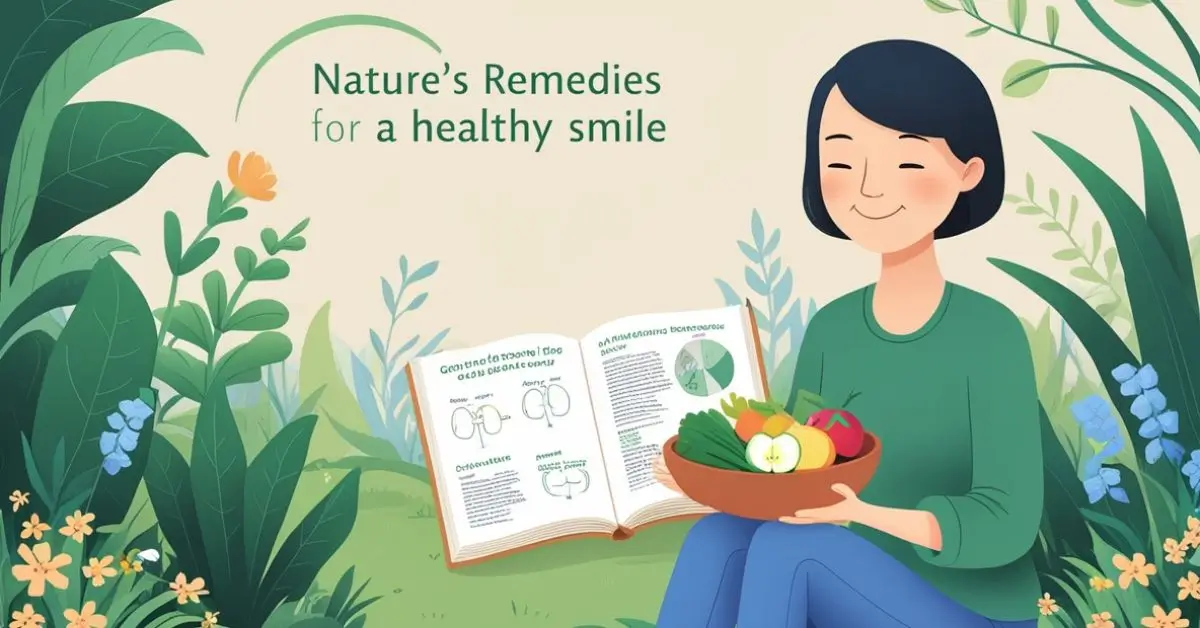Gum disease, also known as periodontal disease, is a common oral health problem that affects millions of people worldwide. Characterized by inflammation of the gums, this condition can progress into more severe stages, eventually leading to tooth loss if untreated. While visiting a dentist is the most effective way to diagnose and treat gum disease, there are natural remedies and lifestyle changes that may help manage and, in some cases, even reverse early stages of gum disease from the comfort of your home.
This article will explore ways to cure gum disease without a dentist, focusing on natural remedies, diet, oral hygiene, and lifestyle habits. Although these methods may alleviate symptoms or slow the progression of gum disease, it’s essential to consult a healthcare professional if the condition worsens or does not improve.
Understanding Gum Disease
Gum disease begins with the accumulation of plaque, a sticky film of bacteria that forms on teeth. When plaque is not removed by regular brushing and flossing, it hardens into tartar, which leads to irritation and inflammation of the gums. Gum disease is generally classified into two stages:
- Gingivitis: The mildest form of gum disease, characterized by red, swollen gums that may bleed during brushing or flossing. Gingivitis is reversible with good oral hygiene and proper care.
- Periodontitis: The advanced stage of gum disease, where the inflammation spreads below the gumline, leading to bone and tissue loss. Periodontitis requires professional treatment and can result in tooth loss if not properly managed.
Symptoms of gum disease include swollen, red, or tender gums, persistent bad breath, receding gums, and loose teeth. Identifying these symptoms early on and taking appropriate action can help stop the progression of gum disease.
Causes of Gum Disease
Several factors contribute to the development of gum disease, including:
- Poor Oral Hygiene: Irregular brushing and flossing allow plaque to accumulate, increasing the risk of gum disease.
- Smoking or Tobacco Use: Smoking impairs the immune system, making it harder for the body to fight off gum infections.
- Genetics: A family history of gum disease increases the likelihood of developing the condition.
- Hormonal Changes: Pregnancy, menstruation, and menopause can make gums more sensitive, increasing the risk of gum disease.
- Medications: Certain medications, such as antidepressants, antihistamines, and blood pressure drugs, can reduce saliva production, leading to dry mouth and gum disease.
- Chronic Conditions: Diseases like diabetes and autoimmune disorders can make individuals more susceptible to gum infections.
Understanding these risk factors helps in addressing the root causes of gum disease and implementing preventive measures.
Natural Remedies to Cure Gum Disease
While professional dental care is recommended for severe gum disease, the following natural remedies can help manage mild forms like gingivitis and prevent the condition from worsening.
1. Oil Pulling
Oil pulling is an ancient Ayurvedic practice that involves swishing oil (typically coconut oil) in your mouth for 10 to 20 minutes. This practice helps remove toxins, bacteria, and plaque from the mouth.
- How to Use: Swish one tablespoon of coconut oil in your mouth for 15-20 minutes. Spit it out and rinse your mouth with warm water. Brush your teeth afterward. Perform this daily for the best results.
Coconut oil contains lauric acid, known for its anti-inflammatory and antimicrobial properties, making it effective in fighting the bacteria responsible for gum disease.
2. Saltwater Rinse
A saltwater rinse is a simple and effective remedy for reducing gum inflammation and killing bacteria. Salt is a natural disinfectant that can help soothe irritated gums and promote healing.
- How to Use: Dissolve ½ teaspoon of salt in a glass of warm water. Swish the solution in your mouth for 30 seconds and spit it out. Repeat this process two to three times a day.
The saltwater rinse helps reduce swelling and flush out bacteria from the gum pockets, which can prevent the progression of gum disease.
3. Aloe Vera
Aloe vera is known for its soothing and anti-inflammatory properties, making it a useful remedy for gum disease. It can help reduce gum inflammation and promote tissue regeneration.
- How to Use: Apply pure aloe vera gel directly to the gums and leave it on for a few minutes. Rinse your mouth with water afterward. Repeat this process twice a day for optimal results.
Aloe vera can also be used as a mouthwash by mixing its gel with water and swishing it around in the mouth.
4. Tea Tree Oil
Tea tree oil is a powerful antimicrobial agent that can help combat bacteria in the mouth. It has been found to reduce bleeding and inflammation in individuals with gum disease.
- How to Use: Add a few drops of tea tree oil to your toothpaste or dilute it with water and use it as a mouthwash. Be cautious not to swallow the oil, as it can be toxic if ingested.
Tea tree oil’s antibacterial properties can help reduce plaque buildup and prevent the progression of gum disease.
5. Turmeric
Turmeric contains curcumin, a compound with anti-inflammatory and antioxidant properties. It has been shown to reduce plaque, gingivitis, and bacteria when used as part of an oral care routine.
- How to Use: Make a paste using ½ teaspoon of turmeric powder and water. Apply the paste to your gums, let it sit for 10 minutes, then rinse your mouth with water. Do this once or twice a day for the best results.
Turmeric helps reduce inflammation and bacterial growth, making it a valuable tool in treating gum disease.
6. Green Tea
Green tea is rich in antioxidants, particularly catechins, which help reduce inflammation and fight bacteria. Studies have shown that drinking green tea regularly can improve gum health and reduce the severity of gum disease.
- How to Use: Drink one or two cups of green tea daily or use cooled green tea as a mouth rinse to benefit from its antimicrobial properties.
The antioxidants in green tea help strengthen the immune system and prevent the progression of gum disease.
Maintaining Proper Oral Hygiene at Home
Consistent oral hygiene practices are crucial for preventing and managing gum disease. While natural remedies can help, maintaining a proper oral care routine is essential for long-term gum health.
1. Brush Your Teeth Twice a Day
Brushing your teeth twice daily with fluoride toothpaste helps remove plaque and bacteria that contribute to gum disease. Use a soft-bristled toothbrush and gently brush in circular motions along the gumline to avoid damaging the gums.
2. Floss Daily
Flossing helps remove food particles and plaque from between the teeth and along the gumline. Daily flossing is essential for preventing gum disease, as brushing alone cannot reach these areas.
3. Use a Mouthwash
An antimicrobial mouthwash can help kill bacteria that brushing and flossing may miss. Look for a mouthwash that is specifically designed for gum health or contains natural antibacterial agents like tea tree oil.
4. Use an Interdental Brush
An interdental brush is a small brush designed to clean between the teeth. It is particularly effective for individuals with gum disease, as it can reach areas that floss may not.
5. Stay Hydrated
Drinking water throughout the day helps rinse away food particles and bacteria, keeping your mouth clean. Proper hydration also promotes saliva production, which is essential for maintaining a healthy mouth and neutralizing harmful bacteria.
Diet and Lifestyle Changes to Prevent Gum Disease
A healthy diet and lifestyle play a significant role in preventing and managing gum disease. Incorporating the following changes can help improve your oral health and overall well-being.
1. Eat a Balanced Diet
A diet rich in vitamins and minerals supports gum health. Include foods that are high in calcium, vitamin C, and omega-3 fatty acids, as they promote strong teeth and gums. Leafy greens, fruits, nuts, seeds, and fatty fish are excellent choices.
2. Avoid Sugary Foods and Drinks
Sugary foods and drinks contribute to plaque formation, increasing the risk of gum disease. Minimize your consumption of sweets, sodas, and processed foods to protect your gums.
3. Quit Smoking
Smoking is a leading cause of gum disease, as it weakens the immune system and reduces blood flow to the gums. Quitting smoking improves your ability to fight off gum infections and promotes overall gum health.
4. Manage Stress
Chronic stress weakens the immune system, making it harder for the body to fight off infections, including gum disease. Practicing stress-relief techniques such as meditation, deep breathing, or exercise can help improve your gum health.
5. Limit Alcohol Consumption
Excessive alcohol consumption can dry out the mouth, reducing saliva production and increasing the risk of gum disease. Drink alcohol in moderation and stay hydrated to maintain a healthy mouth.
When to See a Dentist
While these natural remedies and lifestyle changes can help manage gum disease, it’s important to seek professional care if:
- Your symptoms persist or worsen despite home treatments.
- You experience severe gum pain or bleeding.
- Your gums begin to recede or your teeth become loose.
A dentist can provide deep cleaning treatments, prescribe medications, or perform surgeries if necessary. Early intervention is key to preventing long-term damage to your gums and teeth.
Conclusion
Gum disease is a common but preventable condition that can be managed with proper oral hygiene, natural remedies, and lifestyle changes. While it’s possible to alleviate early symptoms of gum disease without visiting a dentist, regular dental checkups remain essential for maintaining overall oral health. By incorporating practices like oil pulling, saltwater rinses, and maintaining a healthy diet, you can protect your gums and prevent the progression of gum disease.
Remember, gum disease doesn’t have to lead to tooth loss. With a proactive approach to oral care and natural remedies, you can keep your gums healthy and enjoy a lifetime of strong, beautiful teeth.

 App6 months ago
App6 months ago
 News6 months ago
News6 months ago
 Business6 months ago
Business6 months ago
 News6 months ago
News6 months ago
 Tech6 months ago
Tech6 months ago
 Tech6 months ago
Tech6 months ago
 Tech6 months ago
Tech6 months ago
 Tech6 months ago
Tech6 months ago




